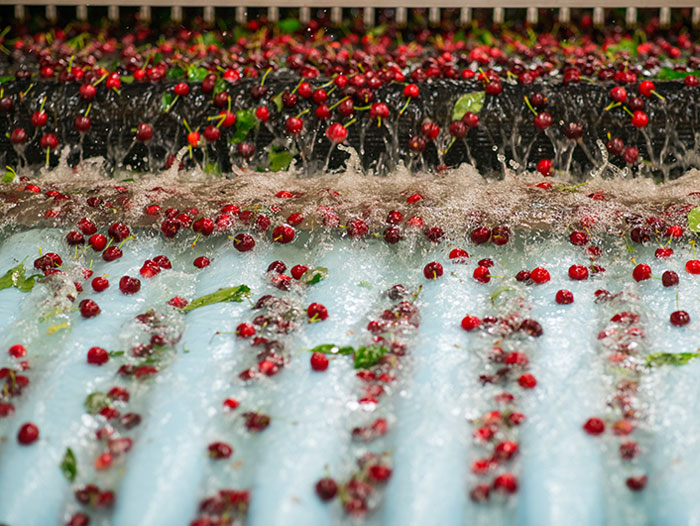California Cherry Harvest Brings Hope, Health and Extra Precautions
May 8, 2020 | 3 min to read

Sacramento, CA — Cherry harvest has started in California bringing with it hope, health and new beginnings – all things we need now more than ever.
“Safety is always our highest priority,” says Chris Zanobini, Executive Director of the California Cherry Board, which represent over 600 cherry growers, packers and shippers throughout the state. “This season we want everyone to know that extra precautions are being taken to prevent the spread of COVID-19 among the essential workers who bring cherries to people around the world.”
According to Zanobini, California cherry growers are expecting to harvest about 7 million 18-pound boxes this year. “As much as 25 percent of California’s cherry crop is normally exported, but the pandemic is disrupting markets throughout the world,” he says. “California cherry growers will be relying much more on domestic sales this season and we’re thankful for retail distribution channels that are keeping food moving to U.S. consumers.”
Harvest of California cherries started in late April in the southern-most growing areas near Bakersfield and Fresno. Peak production is expected in mid-May when harvest will move to the state’s largest cherry-growing region near Lodi.
“Normally at this time of year, growers are worried about rain, which can cause significant crop losses,” explains Zanobini. “This year growers are focused on making adjustments to their farming and packing operations to prevent the spread of COVID-19 among workers.”
It’s pretty easy to implement social distancing while harvesting cherries since pickers are outside and work one-to-a-tree. Cherry trees are planted with ample spacing that allows workers to easily stay six feet from each other or more.
Zanobini notes that several adjustments are being made to allow harvest crews to continue social distancing during breaks and as they load trailers with fruit and move them out of the field. Additional handwashing facilities are being provided, buckets and ladders are being sanitized and care is being taken to ensure workers are using water containers safely.
The California Cherry Board has provided cherry producers with resources to help them implement appropriate measures throughout their operations and to communicate with their employees about new policies in place this season. The Board has created an on-line COVID-19 Resource Center to provide tools and guidance to ensure safe working conditions in the field, packing facilities and with office staff.
Packing facilities can be more challenging to manage because these operations use teams who work together to grade, size, sort, pack and load the millions of boxes of cherries that will harvest in a short time frame spanning about six weeks.
“All of us cherry packers are working to protect our employees using a variety of methods,” says Erick Stonebarger, General Manager of Chinchiolo Stemilt California. “We’re having daily safety meetings, equipment is being sanitized frequently, additional handwashing is required, non-employees are not allowed in our facilities or offices, we’re regularly checking our workers for signs of illness.”
Stonebarger explains that his operation and many others are slowing down sorting lines so they can operate with fewer people per shift and workers can be spaced farther apart. Some packers are putting plexiglass shields to provide barriers between workers. Packers are also providing enhanced paid sick leave policies to discourage employees from coming to work if they’ re ill.
“We’re doing everything we can to protect our workers and prevent spread of the virus,” he stresses. “Our workforce is critically important to us and to making sure we get this year’s crop of cherries to market.”
Zanobini emphasizes that, as always, food safety practices are in place in California cherry orchards and packing facilities and that the fruit is run through sanitized water systems before being packaged for sale.
When it comes to the safety of cherries in grocery stores, it’s important to note that health experts and government regulators have been very clear COVID-19 is not spread through food.
“Cherries are often sold in bags or clamshells and some consumers may feel more comfortable buying packaged cherry products,” says Zanobini. “Shoppers will also see bulk displays of cherries this season in their grocery stores and these are perfectly safe as well. As always, you should thoroughly wash cherries with cold running water before eating. Do not use soap, detergents or other sprays.”
Zanobini emphasizes that cherries have many health benefits and contain compounds that help build your immune system and can prevent illness. More information about California cherries including health tips, recipes and answers to questions specific to COVID-19 can be found at www.calcherry.com.
